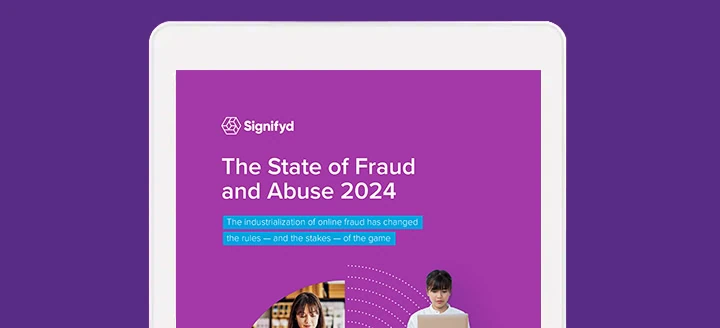We all work with and encounter women making history every day. Each one might not get a chapter in the history texts being read 50 years from now, but today, each is contributing to something greater — a company, a technology, a message, a movement, a community, a circle of friends, a family.

To celebrate Women’s History Month, we endeavored to tap into some of that history-making energy to illuminate in a series of blog posts the expertise, wisdom and inspiration that the women of Signifyd bring to the world. Today, we conclude our series with a focus on the future — of ecommerce and of work itself — so we turned to female leaders across Signifyd’s various teams to hear from the experts.
The future of ecommerce
Ping Li, vice president of risk and chargeback operations, San Jose, California
Criminal organizations are constantly picking up their attacks. Fraud prevention solutions will be very much needed for anyone who wants to do ecommerce. I highly encourage collaboration among ecommerce merchants and the industry.

Ping Li
The fraudsters share their tools and trade data. The challenge I see is that our merchants are working in silos. Signifyd has a huge network of merchants, so when we see a fraud attack on a single merchant, we learn about it, and we can help the next merchant prevent it. If you’re working alone, it is hard.
The ecommerce industry will continue to grow, and 10 years down the road, I’m hoping there are more collaborations among the industry and the merchants — and that merchants will rely more on experts to do the fraud protection.
Renata Caramelo, risk intelligence manager, São Paulo, Brazil
Everything is happening so fast. Think about 10 years ago: A lot of people did not have online purchasing, or the ability to have everything in their hand with a cell phone. So, predicting where we will go in the next 10 years is hard. I would say we can expect even faster changes, faster innovation.

Renata Caramelo
If we take one lesson from the pandemic, it should be this: We do not necessarily need stores open to buy things – we can do it mostly online. Before the pandemic, companies had problems with workers working from home, and when they needed to adapt, they did. That’s what we should expect for the future: more technology making things easier and quicker for everyone.
The future of work
Emily Mikailli, chief people officer, San Jose, California
In the next five to 10 years, I think there will be an emphasis on how jobs are incorporated into people’s lives vs. how people make their lives work around their work.
There has been a reckoning during COVID: It has empowered people to not be so limited in their view of what people need to do to be successful and to take more risks. When you’re going through a global pandemic, the idea of risk is very different than maybe it was a while back. We are seeing more people dropping out of the traditional workforce to take on less traditional roles or ways of making an income. People are less saddled to the idea of a 9-to-5 job.

Emily Mikailli
If people are really unhappy with their job or really burned out, I think they would be a lot more likely to say, “I might just step away and do something radically different.”
Ten to 15 years ago, the job market was not good, and people were just grateful to be employed. Over the past 10 to 15 years, that has shifted: Employees have a lot of power, and companies have responded with greater flexibility.
Even if we continue on this path toward a recession, although that does put a little more power back in the hands of employers, it also puts pressure on employers to make sure they’re making really cost-effective decisions. The move to remote work was heavily influenced by COVID, but now most companies are maintaining some flavor of that. Remote work is usually cheaper: Maintaining an office presence is inefficient, and employees spend time commuting when they could have been either at work or filling their cup with things that bring them joy and make them invigorated for work.
The economy does drive a bit of the power dynamic between employees and employers. But the fact that people are becoming more open-minded about what it looks like to be successful is shifting some power away from employers.
Illustration by Getty Images, photos courtesy of Signifyd
Interested in an organization that looks to the future? Come join us.












